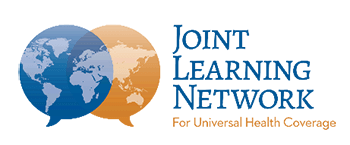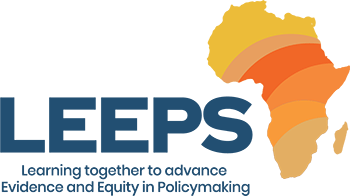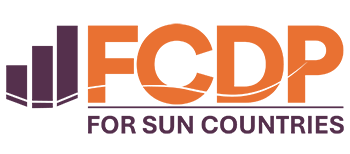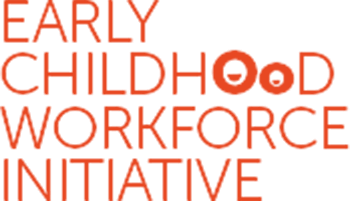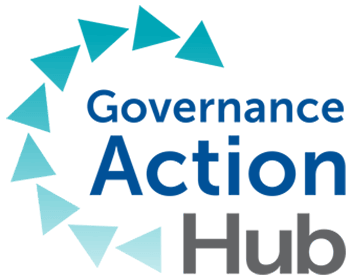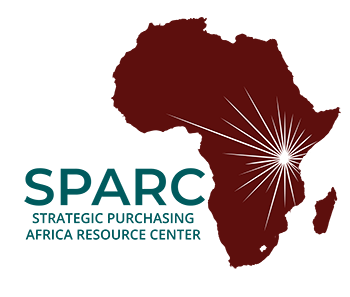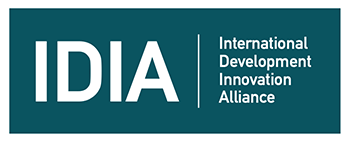How countries like Colombia are reinventing primary care and increasing provider autonomy to deliver services
What does it take to make primary health care (PHC) more efficient, higher quality and truly centered on people’s needs? According to the Global Lancet Commission on Financing PHC, a big part of the answer lies in giving providers more autonomy — paired with direct facility funding and sound financial management.
When PHC facilities have the authority to manage their own budgets and are held accountable for results, they can use resources to more effectively meet the needs of the communities they serve. But that kind of autonomy only works if providers also have the capacity to manage funds responsibly.
Countries are experimenting with integrated care models like Primary Care Networks (PCNs) to improve access to patient-centered health services. While structures and objectives vary, the core idea is the same: connect health facilities through shared clinical and administrative systems to improve efficiency, collaboration and outcomes. PCNs can reduce fragmentation, stretch limited resources and boost resilience across the health system.
In February 2025, the Joint Learning Network for Universal Health Coverage brought together members of the Foundational Reforms for Financing and Service Delivery of Primary Healthcare Collaborative — which includes health systems leaders from the Philippines, Indonesia, Kenya, Ghana and Colombia — to explore how PCNs are helping strengthen provider autonomy.
The session spotlighted Colombia, where PHC facilities and PCNs operate with a high level of financial autonomy. A former director from the Ministry of Health and managers of two public PCNs in the Cauca region shared the history behind Colombia’s reforms, the challenges they’ve faced and the lessons they’ve learned.
In this blog, we dive into those reforms and highlight key takeaways from the discussion.
From centralized control to local decision-making in Colombia’s health system
Before 1993, Colombia’s health system was highly centralized. Public providers relied on the national government for management and funding, but resources were often delayed, not always well managed or insufficient. Local decision-making was limited, and quality assurance systems were weak.
A major reform in 1993 reshaped the system. Colombia adopted a health insurance-based model to expand coverage, improve access and promote efficiency and equity. Health insurers began managing per-capita public funds, with a contributory system for formal workers and government subsidies for those without income.
At the same time, the country decentralized health service delivery. Health facilities gained autonomy to manage funds from insurers, public sources and private payments. Public facilities were restructured into “Social Companies of the State,” responsible for their own financial sustainability. While most facilities are private and located in urban areas, 75% of municipalities — especially in rural zones — rely on a single public provider. Insurers operate through public and private hospitals, medium, small-size and stand-alone health care providers and facility networks based on local availability.
The role of PCNs and accountability structures
Primary Care Networks (PCNs) have operated in Colombia for more than four decades, typically using a “hub and spokes” model: smaller health posts (spokes) are the first point of care for communities, supported by a central facility (hub) which offers additional essential health care services and specialized care. PCNs can be public, private or mixed with varying organizational structures, management, financial arrangements and service delivery configurations.
Central facilities have high management autonomy to receive and manage resources from multiple funding sources. They allocate minimal funds from private patients and copayments from privately insured patients health users to health posts to manage operations. In public-private partnerships, both parties agree on resource allocations, management roles and revenue sharing, often with public infrastructure run by private operators.
In public- or private-only PCNs, planning and budgeting activities are led by the hub and is responsible for budget execution (e.g., staffing, medicines, infrastructure, equipment, endowments, basic services and most operational needs). The spokes have limited management autonomy and can spend their allocated funds to cover operations, maintenance of infrastructure and procurement of low-cost equipment.
The reforms also introduced a national System of Quality Assurance. Technical guidelines were created for provider-insurer contracts, outlining service packages, minimum quality standards and funding terms.
All health facilities and PCNs are accountable to insurers, the Ministry of Health (MoH) and local Secretariats of Health. They must report on population reach, service quality and financial management to the latter two. Secretariats regularly assess quality and provide technical support and, under certain conditions, transfer funds to health care providers for investments in infrastructure and technology.
New opportunities and growing pains
While decentralization and autonomy brought new flexibility, it also surfaced challenges. Many new — mostly private — facilities were created to meet health needs. But this growth was poorly coordinated, leading to competition rather than collaboration across providers.
Many PHC facility directors and boards had limited capacity to manage budgets, contracts and expenditure effectively, and PCN managers had challenges with equitable allocation of resources among their facilities.
Payment delays from the central government, delays and lack of payment from insurers were common, performance indicators and quality compliance indicators used by insurers for payments were not transparent and insurers costs and expenses escalated, affecting the flow of resources and operations of the health care centers. The availability of skilled staff, particularly in remote areas, was challenging. Collectively, these factors have contributed to the ongoing barriers in access and uneven quality of care.
Government actions to address emerging challenges
To respond to the challenges of decentralization and provider autonomy, the MoH progressively implemented a series of ongoing measures after the health reforms came into effect:
- Targeted facility support: The MoH categorized public facilities based on their financial sustainability and developed tailored financial improvement plans for those at higher risk, offering close monitoring and support to enable recovery.
- Direct payments for high-cost services: The MoH initiated direct transfers to providers for select high-cost health services — bypassing health insurers — to ensure stable funding for essential operations.
- Infrastructure and operational investments: Central government funds were allocated to strengthen infrastructure, equipment, staffing and information systems in public facilities, based on submitted development projects. Local Secretariats of Health also made periodic transfers to support public facility operations and sustainability.
- Targeted subsidies for underserved areas: Public facilities in remote, low-density and impoverished areas received subsidies where health insurers had limited enrollment.
- Integrated provider networks: The MoH regulated the creation of networks of health providers to promote integration across levels of care and streamline financial resource management.
- Assessment of manager performance and technical support: Public facility managers underwent periodic evaluations, while the MoH and local Secretariats provided technical assistance to improve quality.
In the last couple of years, MoH has toughened the control mechanisms on insurers to improve the flow of financial resources and timeliness of payments to the facilities. The MOH is planning to implement a major reform to gain complete management of health system funds with only a marginal participation of the health insurers. Local health departments and disciplinary bodies will also carry out inspections and oversee management and allocation of resources to health service providers to prevent and correct persistent difficulties in resource management and provision of health services.
How health care providers strengthened their financial management
With these reforms in place, health providers, including PCNs, began adapting to their expanded autonomy by strengthening financial management and building management capabilities to improve sustainability and care quality:
- Diversifying income: Providers signed contracts with multiple insurers and other funders, while streamlining billing procedures to ensure timely cash flow.
- Seeking investment funds: Facilities applied for earmarked funds from the MoH to support infrastructure and equipment upgrades.
- Improving contract terms: Providers negotiated better rates and contractual conditions with insurers to maximize revenue and reinvest in health services.
- Strategic budgeting: Resources were carefully allocated to hire staff, purchase medicines and equipment and maintain infrastructure. Regulations require a minimum of 5% of public facility budgets to go toward infrastructure and equipment investments, with the remainder allocated based on each facility’s care model and insurer contracts.
- Strong financial oversight: Facilities managed dedicated bank accounts, assigned staff to oversee contract implementation, tracked budgets, and conducted regular reviews of financial and service performance.
- Leveraging data systems: Facilities developed information systems to enable tracking of financial, administrative and service indicators, supporting decision-making and ensuring transparency. A dedicated system allows national and local authorities to monitor budget execution.
- Governance and accountability: Facility Boards of Directors, comprising community and government representatives, approve annual budgets and oversee financial controls. Providers demonstrate accountability by reporting on financial execution and service outcomes to the MoH, insurers, local authorities and communities. All parties sign improvement plans and regularly monitor progress.
- PCN financial management mechanisms and roles: PCN managers and their steering committees periodically plan, budget, allocate and spend financial resources in consultation with administrative staff of central and hub facilities to meet their often-asymmetric staffing, equipment and infrastructure needs. It enables PCNs to utilize their flexibility to prioritize and improve efficient resource management. PCNs implement routine internal audits and reporting to ensure budgets are executed on time, for the intended purpose, and services adhere to quality standards.
Public and private health providers are accountable to national and local governments for public funds received. Public PCNs and facilities publish annual reports to the communities they serve, while providers share financial and service delivery updates through their communication channels.
Six key lessons from Colombia’s experience
- Decentralized management of primary care facilities can enhance responsiveness and local decision-making, though governance structures differ between public and private providers. However, a strong commitment from local authorities is required to efficiently manage the provision of health services in their territories.
- Pooling resources from multiple sources — including government transfers, insurance payments and self-generated income — helps ensure the financial sustainability of PHC facilities and enables timely problem-solving.
- Organizing service delivery through Primary Care Networks (PCNs) improves territorial coverage and financial efficiency. The equitable allocation of funds among hub-and-spoke facilities based on service levels ensures a better response to meet the population’s health needs. The planning, budgeting and execution of resources take place through designated mechanisms and roles within the network
- Regulated financial autonomy allows facilities and PCNs to use resources with an appropriate level of flexibly to meet operational needs while still being held to minimum standards and performance indicators for quality, management and service delivery. Public facilities follow resource allocation formulas that guide infrastructure and equipment investments.
- Strong accountability mechanisms ensure providers are answerable to national and local authorities, health insurers, funders and communities. This includes oversight of service quality, responsiveness to local health needs, transparency in contracts and effective fund management. Appropriate information systems are key to enabling timely performance tracking and financial monitoring.
- Ongoing investment in management capacity — including technical assistance and regular performance evaluations of facility and PCN managers — supports the long-term efficiency and effectiveness of decentralized service delivery.
As countries explore reforms to make their health systems more people-centered and resilient, Colombia’s experience shows what’s possible when providers are trusted with both autonomy and responsibility, as well as the challenges that arise along this path. The lessons shared here offer practical insights for policymakers and practitioners navigating similar challenges in diverse contexts.


